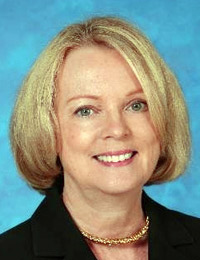Our 'Plastic' Brain Can Be 'Rewired,' According to Researcher
 |
Janet Zadina |
Can the brain be “rewired”? What are some specific
instructional techniques that will result in learning?
Faculty members and students at Sam Houston State University
got some answers to those questions last week when they gathered
to evaluate recent brain research and learning.
Janet Zadina, an award-winning researcher in the area of neuroscience,
presented information related to the human brain based on
the work of many in the emerging area of neuroscience.
One of the findings that Zadina shared is that the brain is
like “plastic,” and can change as a result of
experience, meaning that learning literally changes the structure
and function of the brain.
As a result, the instructional strategies used by educators
have a significant impact on the brain, she said.
Zadina currently serves as a post-doctoral fellow in cognitive
neuroscience in the Department of Psychiatry and Neurology
at Tulane University School of Medicine in New Orleans. Her
research is on neuroanatomical risk factors for developmental
language disorders through MRI brain scans.
She is also working on research projects at a Veteran’s
Administration hospital on post-traumatic stress disorder.
Zadina is co-author of Writing Now, a college developmental
composition textbook, and has presented keynote speeches and
workshops on brain research across the nation.
The session was sponsored by the College of Education and
the Department of Educational Leadership and Counseling as
part of a professional development series for faculty at the
university.
“It is essential that educators apply the latest brain
research to teaching strategies so that student learning is
optimized,” said Rick Bruhn, professor of counseling
and co-coordinator for the event.
Julie Combs, assistant professor of educational leadership,
and co-coordinator of the event, said that “learning
from someone with both an educational background and a background
in neuroscience was an invaluable opportunity.
“New technologies that can measure brain activity will
likely change teaching behaviors for future students,”
she said. “It is an exciting time to be in education!”
—END—
SHSU Media Contact: Frank
Krystyniak
Feb. 2, 2006
Please send comments, corrections, news tips to Today@Sam.edu.
|


